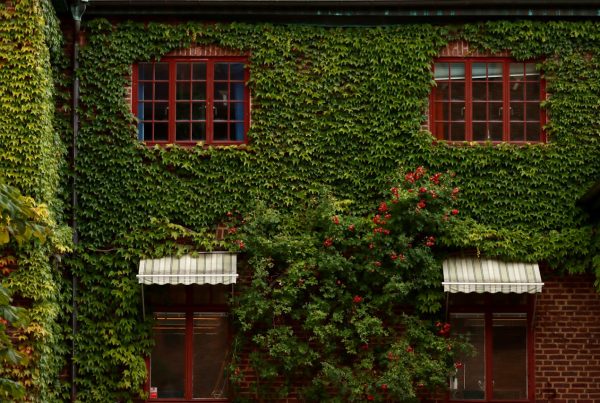Envelopes are essential parts of any complete structure. They provide aesthetic appeal, protection, and comfort for the building and its occupants. As climate concerns grow more prominent, engineers, architects and builders are developing smarter, more sustainable solutions that make these facades more resilient and environmentally friendly.
What Is a Sustainable Building Envelope?
A building envelope is the threshold between a building’s interior and the outside world. A sustainable one is more meticulously crafted, following specific design principles and using sustainable, energy-efficient materials.
The construction sector accounts for 37% of global carbon emissions. Embracing sustainable design and construction practices in building envelopes can help offset this number without sacrificing quality.
The Importance of Sustainable Building Envelope Design
Well-designed, sustainable building envelopes provide the necessary interior-exterior barrier and regulate interior temperature and air quality, leading to these benefits:
Indoor Comfort
Well-designed building envelopes create a comfortable indoor climate by regulating temperature, humidity and air quality. Their design allows them to maintain such an environment regardless of outside weather. As a result, the building’s occupants can take shelter and comfortably spend extended periods indoors for work or leisure.
Energy Efficiency
Building envelopes reduce heat transfer and air infiltration. This barrier helps maintain a consistent indoor climate, which minimizes the need for excessive heating and cooling from air conditioners. As a result, HVAC systems use less energy and reduce their greenhouse gas emissions.
Lower Energy Costs
As power bills get more expensive, many households and offices want to save as much as possible. A well-designed threshold can help.
The efficient energy use of smart building envelopes comes with lower energy costs. If there is little need for frequent or constant heating or cooling, building owners will consume less energy and enjoy lower bills. For example, insulation materials like Icynene could reduce average power bills by 30% to 50%.
Protection of Structural Components
Aside from ensuring the comfort of a structure’s occupants, the envelope is also responsible for protecting the building’s structural integrity. It forms a skin, serving as a barrier against rain, snow and outside air, reducing moisture-related damage.
It prevents mold, rust and rot from forming and affecting the strength of wood, steel and other materials. This protection extends the lifespan of the building, minimizing the need for repairs or extensive renovations. Materials exposed to the outdoors face changing weather conditions, like rain, sun and freeze-thaw cycles, so making careful material choices for an envelope is essential. HDPE, stainless steel and aluminum are particularly long-lasting and durable.
Improved Sustainability
Eco-friendly materials and energy-efficient design contribute to a building’s sustainability. Smart building exteriors help structures consume less energy, minimizing their carbon footprint.
The envelope’s ability to protect a building’s interiors and structural integrity also reduces damage and waste, allowing more efficient use of resources and materials.

Key Components of a Sustainable Building Envelope
These building envelope components work together to ensure the barrier holds up well:
Air Barriers
Air barriers are crucial for minimizing air movement in and out of a building, which can lead to poor energy efficiency, drafts, pollution or inconsistent temperature. This layer creates a seal that keeps heated air inside during the winter. It also prevents wind-driven moisture from permeating the walls in hot or humid weather.
Common examples of air barriers include:
- House wraps
- Sheathing
- Caulking
- Masonry treatments
Vapor Barriers
Vapor barriers operate more specifically to prevent moisture and condensation from entering the building. These barriers are essential, as condensation buildup could lead to higher energy costs, mold growth and rot.
These conditions could also affect people’s health. For example, mold exposure can trigger allergic reactions or asthma attacks. Some common materials used as vapor barriers include polyethylene plastic sheeting, vapor barrier paint and foil-faced insulation.
Thermal Barriers
Thermal barriers or insulation are crucial for energy efficiency and maintaining consistent indoor temperatures, ensuring the comfort and health of all occupants. Maintaining appropriate internal climates prevents moisture, mold growth and other structural problems.
Several types of insulation are available, depending on the building’s needs and the area’s climate. Standard varieties include:
- Mineral wool
- Fiberglass
- Spray foam
- Rigid foam

Sustainable Building Envelope Design Principles
Many sustainability-oriented engineers, architects and construction professionals follow these practices and principles to create smart solutions that keep indoor environments safe and comfortable while maintaining environmental responsibility.
Enhance Energy Efficiency
Energy-efficient building design primarily involves insulation, material choices and strategic solar design. These elements work together to create more consistent interior temperatures, ensuring energy efficiency, improving comfort and preventing temperature-induced building damage.
For example, materials like brick and stone have a high thermal mass and can consistently store heat and release it gradually, ensuring better temperature regulation. Using insulation alongside these materials improves temperature consistency. The placement of fixtures relative to the sun is also beneficial. For example, south-facing windows help provide passive heating in the winter, improving building envelope efficiency.
Improve Indoor Environments
Air barriers and moisture management provide a clean, healthy indoor environment by minimizing pollutants and preventing strong drafts from entering the building. Designers and engineers should combine vapor barriers and ventilation tools like fans, air conditioning systems and air purifiers to manage humidity levels, reduce irritation and prevent structural damage.
Prioritize Sustainable Materials
Sustainability requires more than creating energy-efficient environments. Builders and designers should be conscious of their environmental impact during the planning and sourcing phase. Teams could prioritize local, ethically sourced materials with lower environmental costs for extraction, processing and transport. Reclaimed wood, recycled steel and glass are popular options for creating more sustainable facades.
Constructing a Sustainable Future
Construction is a necessary part of industry and civilization. However, its environmental effects require the building industry to be more mindful and change some approaches. Adopting smart envelope solutions through sustainable design and construction practices is one way to transition the sector into a future where humans, industry and the environment can all thrive.











